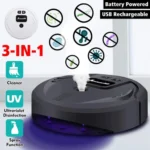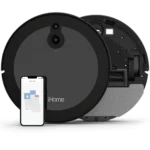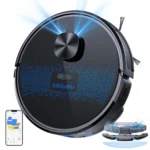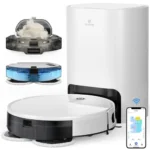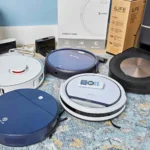Have you ever found yourself frustrated with traditional vacuum cleaners that just can’t seem to reach those tight spaces? You know, the places where dirt and debris love to hide – like between couch cushions or underneath cabinets. Despite their seemingly powerful suction, traditional vacuums haven’t been designed to handle the challenges of cleaning tight spaces. So what’s the solution? In this article, we explore the limitations of traditional vacuums and delve into the mechanisms powering smart vacuums to tackle those hard-to-reach areas. With advanced technology such as built-in AI programs, smart mapping, digital navigation, and advanced cleaning heads, smart vacuums are revolutionizing the way we keep our living spaces clean.
Why Traditional Vacuum Cleaners Don’t Work
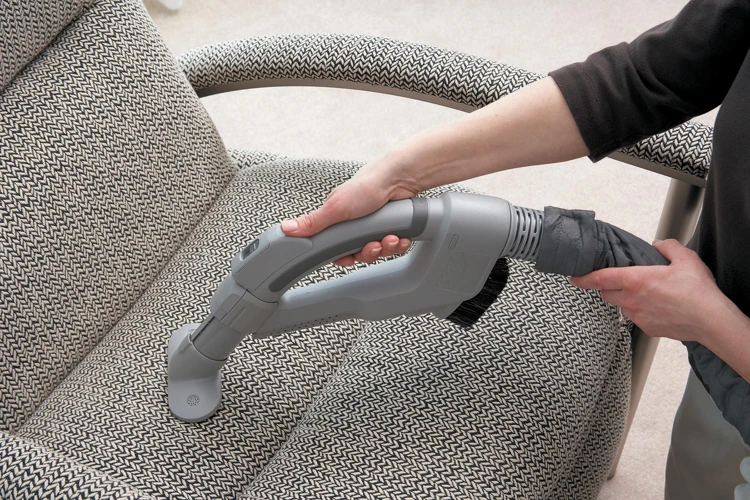
It’s no secret that traditional vacuum cleaners have been a staple in households for decades. However, there are a multitude of reasons why they don’t always get the job done. Despite their widespread use, many people still struggle with the frustration of not being able to reach tight spaces with their bulky, inflexible, and inefficient designs. Not only that, but traditional vacuum cleaners can also contribute to health hazards, higher energy consumption, and loud noise levels. Let’s dive deeper into why these machines fall short and how smart vacuums have revolutionized the cleaning game to solve these issues once and for all.
Bulky Design
Traditional vacuum cleaners have invaded our homes for decades. But despite its effectiveness in keeping our floors clean and dust-free, they are not without flaws. One of the primary reasons they fail to clean efficiently is their bulky design.
The size and weight of traditional vacuum cleaners prevent them from getting into tight spaces such as under the furniture, corners, and narrow crevices. Their massive bodies make it difficult for the machine to navigate through narrow passages, and cleaning around heavy furniture can feel like a hassle.
The bulky design of traditional vacuum cleaners make them difficult to store. They occupy a considerable amount of space in a closet or storage room, which can be impractical if you live in a small apartment or house.
Another issue with the traditional vacuum’s size and weight is that it can pose a health hazard. Carrying a bulky machine up and downstairs or around the house can cause strain on your back and muscles, leading to pain and discomfort. Not to mention the risk of injuries due to tripping or falling over the cumbersome vacuum cords.
The inefficiency associated with traditional vacuums can also lead to higher energy consumption. In attempting to clean a tight space, traditional vacuums will consume more power without achieving the desired results.
Lastly, inefficient cleaning can be a consequence of their bulky design. Carpets and rugs can be challenging to clean with a traditional vacuum, making the task tedious and time-consuming. The vacuum’s weight will not let the cleaning head get deep into the fibers, leaving behind dust and dirt accumulation.
Traditional vacuum cleaners’ bulky design is a significant disadvantage. They fall short when it comes to reaching tight spaces, making them inefficient in cleaning hard-to-reach areas. Additionally, they are cumbersome to use, pose health hazards, consume more energy, and make cleaning carpets and rugs a hassle.
Inflexibility
Traditional vacuum cleaners have been a popular tool for cleaning floors, carpets, and other surfaces for decades. However, they come with several inherent design features that make them challenging for reaching tight spaces. One of these is an inflexible design.
Inflexibility: Traditional vacuum cleaners are typically designed with a fixed cleaning head that is not adjustable. This makes it difficult to maneuver around tight spaces, such as corners or under furniture. As a result, you may miss several areas during cleaning, leaving those zones dirty and dusty.
To make matters worse, traditional vacuum cleaners also have a limited range of motion. They can only move forward and backward, making it difficult to clean tight spaces in a circular or angled motion. This inflexibility is a significant disadvantage when cleaning areas that require a lot of precision.
The inflexible design of traditional vacuum cleaners can also lead to frustration when it comes to storing them. They take up a lot of space and can be challenging to find a spot for. They can also be difficult to move around and can be heavy and cumbersome, making cleaning a hassle.
In contrast, modern smart vacuums are designed with flexibility in mind. They are often designed with adjustable cleaning heads that can be manipulated to reach tight spaces. They also have a wider range of motion, making it easier to clean in a more precise and thorough manner.
Smart vacuums are usually lightweight and portable, making them easy to move around and store. They also come with a range of attachments and accessories that can help you clean every nook and cranny of your home with ease, without sacrificing efficiency or effectiveness.
The inflexible design of traditional vacuum cleaners is a major obstacle when it comes to reaching tight spaces. This issue can be frustrating for homeowners and result in missed areas that are not cleaned properly. In contrast, smart vacuums are designed with flexibility and versatility in mind, making them the ideal tool for cleaning in and around tight spaces. By choosing a smart vacuum, you can enjoy efficient, hassle-free cleaning that meets all of your home cleaning needs.
Shortcomings in the Cleaning Head
One of the major shortcomings of traditional vacuum cleaners is their cleaning head. Many traditional vacuum cleaners have cleaning heads that are too large and bulky to get into tight spaces. They are not designed for precise cleaning, and they do not have the flexibility required to reach all areas of the room.
Additionally, many traditional vacuum cleaners come with cleaning heads that are poorly designed, making them inefficient in vacuuming carpets and rugs. They rely heavily on manual adjustments to switch between different types of flooring, and the bristles on the cleaning head can be too short or too long, leading to ineffective cleaning or damage to the carpet fibers.
Another issue is that traditional vacuum cleaners can be a hassle to use. They require a lot of physical effort and time to operate, making it difficult for people who have mobility issues or are short on time to clean their homes effectively.
In contrast, smart vacuum cleaners have advanced cleaning heads that are specifically designed to tackle all types of surfaces with ease. They have adjustable bristles that can be customized to the type of flooring, ensuring efficient and effective cleaning. They also have the flexibility to clean tight spaces, such as under furniture, and can navigate around obstacles without getting stuck.
With a smart vacuum cleaner, there is no loud vacuum noise to contend with either. They are much quieter than traditional vacuum cleaners, allowing for stress-free cleaning without disrupting those around you.
The cleaning head is one of the key areas where traditional vacuum cleaners fall short, and smart vacuum cleaners provide the perfect solution with their advanced and efficient cleaning technology.
Mechanisms that Empower Smart Vacuums to Reach Tight Spaces
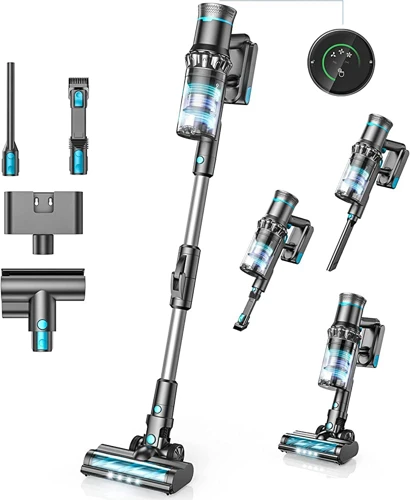
Trying to clean tight spaces with traditional vacuum cleaners can be a headache. The bulk, inflexibility, and limited cleaning heads of traditional vacuums can make it impossible to reach some areas in your home, leaving them filled with dust and allergens. However, with the help of advanced mechanisms, smart vacuums can now easily maneuver and clean even the tightest spaces. These mechanisms, such as built-in AI programs, smart mapping, digital navigation, and advanced cleaning heads, revolutionize the way we clean our homes, making hassle-free vacuum cleaning a reality. In the next sections, we’ll discuss each of these mechanisms in detail and how they solve the common problems of traditional vacuum cleaners.
Built-In AI Programs
Modern vacuum cleaners have a range of features that make them a cut above their traditional counterparts. One of the most innovative advancements that have transformed vacuuming is the integration of built-in AI programs in smart vacuums, which allows them to navigate tight spaces with ease.
These AI programs are integrated into the vacuum’s software, enabling the device to learn from its cleaning patterns and modify its processes to adjust to the changing environment. As a result, the cleaning process is not only more efficient, but it’s also quicker, as the smart vacuum can quickly determine the best cleaning paths.
These programs are designed to collect data on the area being cleaned and use it to create precise cleaning patterns that comprehensively cover every part of the space. This is possible because smart vacuums can detect changes in obstacles in their path and adjust their cleaning patterns accordingly.
These built-in AI programs also enable smart vacuums to work seamlessly with other connected home tech devices through voice commands, remote control, or even scheduled cleanings. Thus, these vacuums are not only efficient but highly convenient as well.
Additionally, these AI programs are making a significant impact on reducing the noise pollution caused by vacuums. Smart vacuums are designed to operate efficiently without necessarily generating any noise disturbance. This feature could be a significant relief for pet owners and parents with infants who are highly sensitive to loud vacuum noise.
In comparison to traditional vacuums, smart vacuums are highly accurate, and their advanced cleaning heads can clean all types of surfaces – from carpets, rugs to hardwood floors – effectively without leaving any debris behind. Traditional vacuums may be inefficient in cleaning carpets and rugs, which can cause frustration, especially in households with pets.
It’s evident that the built-in AI programs that power smart vacuums have revolutionized the cleaning industry. These features are making cleaning no longer a hassle but are making cleaning tasks fun and enjoyable. The technology is not only convenient but also cost-effective and ecologically friendly, making life better for users.
Smart Mapping
One of the outstanding features of smart vacuums that help them to reach tight spaces is smart mapping. Unlike traditional vacuum cleaners, smart vacuums are engineered with advanced sensors and algorithms that enable them to create precise and detailed maps of your home. These maps help to guide the vacuum cleaner and give it an accurate understanding of where it is and where it has already cleaned.
When you first start using a smart vacuum, it maps your home by moving around the house and creating a visual layout of each room. This information is saved in the vacuum’s system and provides a detailed overview that determines the vacuum’s cleaning path in future cleaning sessions.
Smart mapping enables smart vacuums to clean more efficiently and uniformly.Traditional vacuum cleaners often struggle to clean carpets and rugs effectively because they either move randomly or focus on one spot for an extended period. Conversely, smart vacuums map your home to prevent unnecessary cleaning or repetition of previously cleaned areas. Consequently, this function ensures thorough cleaning of your floors while targeting tighter spaces that traditional vacuums can’t reach.
In conclusion, smart mapping is a revolutionary technology that boosts the success rate of smart vacuums in cleaning difficult-to-reach spots. While traditional vacuums move about aimlessly, the detailed maps created by smart vacuums give them a clear view of their homes and offer a quicker and more efficient way of cleaning. These innovative features help to reduce the hassles of vacuum cleaning, overcome the limitations of traditional vacuum cleaners, and give homeowners an easy and convenient method of keeping their homes clean.
Digital Navigation
Smart vacuums are equipped with advanced technology that allows them to seamlessly navigate through the tightest spaces. One of the most important features that enable them to do this is digital navigation. Digital navigation refers to the vacuum’s ability to use sensors, cameras, and other technologies to map out the surrounding environment and plan a cleaning route accordingly.
Digital navigation enables the vacuum to move around obstacles, avoid steps or ledges, and navigate through tight spaces without getting stuck. This can help to save time and effort on your part, as you won’t have to move furniture or other items out of the way before you start cleaning.
The vacuum’s digital navigation technology also allows it to create a map of the cleaning area, which can be used to create a more efficient and effective cleaning path. By analyzing the map, the vacuum can determine the best route to take, optimize its cleaning patterns, and avoid areas that have already been cleaned. This can help to ensure that every inch of your floor is thoroughly cleaned, without the need for multiple passes over the same area.
One of the most impressive benefits of digital navigation is the smart vacuum’s ability to reduce loud vacuum noise. This is achieved through the use of advanced sensors and algorithms that allow the vacuum to detect the noise level in the surrounding environment, adjust the suction power accordingly, and avoid high noise levels. This feature is particularly useful if you have young children or pets who may be sensitive to loud noises.
Digital navigation technology is a key component that makes smart vacuums so effective at cleaning even the tightest spaces. With a smart vacuum, you can be confident that every inch of your floor will be thoroughly cleaned, more efficiently and quietly than with traditional vacuums.
Advanced Cleaning Heads
When it comes to cleaning hard-to-reach areas like tight spaces, advanced cleaning heads of smart vacuum cleaners can come in handy. These heads are specifically designed to remove dirt, dust, and debris from every corner of your space.
One such cleaning head is the tangle-free brush roll. It is designed to pick up pet hair, dirt, and large debris without getting tangled. This innovation is a game-changer for pet owners who are constantly frustrated by traditional vacuum cleaners that frequently get jammed with pet hair or strings.
The motorized brush roll is another advanced cleaning head that is used in smart vacuums. It is designed to rotate at high speeds, loosening and removing dirt, dust, and debris from carpets, upholstery, and hard floors. The motorized brush roll makes vacuuming more efficient and effective, as it can remove dirt that is deeply embedded in carpets, which is often impossible to remove with a traditional vacuum cleaner.
The soft roller brush is yet another innovative feature in smart vacuums. It is designed to gently remove fine dust and large debris from hard floors, without scratching or damaging the surface. Unlike traditional vacuum cleaners, the soft roller brush can pick up both large and small debris in one pass, making cleaning more efficient and time-saving.
The LED headlights on smart vacuums are also an advanced feature of cleaning heads. These headlights illuminate dark and hard-to-reach areas, making it easier for the vacuum cleaner to spot dirt, dust, and debris. As a result, your cleaning efforts become more effective and precise.
Advanced cleaning heads are a significant improvement over traditional vacuum cleaners, especially when it comes to cleaning tight spaces. These features offer superior cleaning performance and make cleaning more convenient and effortless. During cleaning with smart vacuums, you won’t have to worry about loud vacuum noise, as many of them operate quietly. Thanks to these advanced features, smart vacuums are the perfect solution for all your cleaning needs.
Additional Benefits of Smart Vacuum Cleaners
In addition to their superior ability to reach tight spaces, smart vacuum cleaners offer a multitude of added benefits that make them a truly worthwhile investment. These vacuums are not only efficient and precise, but they also offer innovative features to make your cleaning experience more user-friendly and convenient. Let’s take a look at some of the standout advantages that smart vacuums bring to the table.
Efficient and Precise Cleaning
When it comes to cleaning, efficiency and precision are two top qualities everyone wants in a vacuum cleaner. Smart vacuum cleaners come with advanced features that make them more efficient and accurate in cleaning, giving you a more pleasant cleaning experience.
One of the mechanisms that make smart vacuums more efficient is their powerful suction. They come with strong motors and vacuum pumps that can easily remove dirt and debris, including fine dust particles and pet hair, from your floors and carpets. In addition to their powerful suction, smart vacuums often have multiple brushes designed for various surfaces, whether it’s hardwood, tile, or carpet. These brushes are specially designed to remove dirt and debris from every nook and cranny, ensuring that your floors are spotless.
Another impressive feature of smart vacuums is their advanced navigation systems. Unlike traditional vacuums, smart vacuums come with built-in AI programs, smart mapping and advanced sensors that help them to navigate around obstacles and tight spaces. This technology allows them to get closer to walls, cabinets, and other obstacles without bumping into them, ensuring every inch of your floor is cleaned.
Smart vacuums can also provide you with customization options, whereby you can program and schedule the devices to clean specific areas in your home or office. This feature allows you to set your cleaning preferences, including how often the vacuum should clean and where it should work. The result is a pristine cleaning experience with little manual intervention needed on your part.
Efficiency and precision combined with reduced noise level makes smart vacuum cleaners an excellent tool for households with children, seniors, or pets. You can rely on them to work quietly without interrupting your daily routine, and their thorough cleaning capabilities mean you won’t have to worry about any missed spots.
Smart vacuums are an excellent investment for anyone who wants a stress-free cleaning experience. Their advanced technology and customized features make them more efficient and precise, allowing you to spend time on other things while your floors are being cleaned thoroughly.
| Benefits of Smart Vacuums for Efficient and Precise Cleaning |
|---|
| Powerful suction that can remove even the finest debris and dirt |
| Multiple brushes tailored specifically for cleaning different surfaces |
| Built-in AI programs and advanced sensors that enable them to navigate through tight spaces and obstacles |
| Customized programming options for personalized cleaning experiences |
Smart Maintenance and Cleaning Monitoring
Maintaining a clean home requires a lot of effort and time, and keeping track of every little detail can be overwhelming. Fortunately, smart vacuum cleaners can help solve this problem by offering “smart maintenance and cleaning monitoring” features. These features use technology to make the vacuum cleaner more intuitive and less dependent on human memory.
One of the essential features of smart maintenance and cleaning monitoring is a virtual map of the home that the vacuum cleaner creates while running. The built-in machine learning algorithms allow the vacuum cleaner to remember areas that require regular cleaning and more attention. It also enables the cleaner to learn obstacles and adjust its cleaning routines accordingly.
The vacuum cleaner also comes equipped with a dirt sensor that detects dirty areas on the floor. The sensor sends this information to the machine, allowing it to spend more time cleaning them. The vacuum cleaner also alerts the user when the dustbin is full, and it’s time to empty it.
Another helpful feature is that maintenance reminders notify the user when it’s time to clean or replace filters to improve the vacuum cleaner’s performance. This feature prevents forgetting to perform essential maintenance tasks that could decrease the cleaner’s lifespan. With the automatic maintenance reminders, users can continually ensure that the vacuum cleaner is running in top condition.
Lastly, remote monitoring adds to the convenience of these sophisticated vacuum cleaners. One can monitor the vacuum cleaner’s performance from a smartphone and set cleaning schedules as needed. This allows the user to track cleanings or make adjustments remotely, which is especially helpful for those who work outside their homes during the day.
Smart maintenance and cleaning monitoring is a powerful feature of smart vacuum cleaners that addresses one of the most significant challenges of house cleaning. Its virtual mapping, dirt sensors, maintenance reminders, and remote monitoring capabilities make house cleaning more efficient and less time-consuming. Click on this link – Loud vacuum noise if you want to learn more about the annoying noise that often comes with traditional vacuum cleaners.
Remote Control Options
Smart vacuum cleaners not only make it easier to reach tight spaces, but they also grant the user remote control options. Here are some of the advantages of these control options:
- Convenience: With remote control options, users can operate the vacuum cleaner from anywhere in the room. This means that they no longer have to constantly monitor the progress of the machine, and can instead focus on other tasks.
- Customization: Smart vacuums often come with mobile applications that allow users to customize cleaning schedules, set cleaning zones, and even choose specific cleaning modes.
- Efficiency: Remote control options enable users to efficiently direct the vacuum cleaner to clean specific areas. It eliminates the need to go through the entire cleaning process all over again if a particular spot was missed during the initial cleaning process.
- Monitoring: By using the remote control options, users can monitor the cleaning process and receive alerts when the vacuum cleaner requires maintenance. This feature allows the user to take swift action, ensuring that the machine is functioning optimally at all times.
These features provide a more convenient and efficient cleaning experience, and remote control options should be considered when purchasing a smart vacuum cleaner.
Conclusion
In conclusion, traditional vacuum cleaners have several limitations when it comes to reaching tight spaces. Their bulky designs and inflexible cleaning heads make it difficult to clean areas such as under furniture, in corners and along baseboards. However, with the advancements in technology, smart vacuum cleaners have become increasingly popular due to their ability to address these issues.
The mechanisms that empower smart vacuums to reach tight spaces include built-in AI programs, smart mapping, digital navigation and advanced cleaning heads. These features enable the vacuum to navigate around obstacles and reach tight spaces that were previously unreachable.
In addition to their ability to reach tight spaces effectively, smart vacuum cleaners also offer additional benefits. They provide efficient and precise cleaning, smart maintenance and cleaning monitoring and even remote control options. These features make them ideal for those who want to keep their homes clean without having to physically do the work themselves.
Overall, smart vacuum cleaners have proven to be a game changer in the world of cleaning. Their ability to reach tight spaces effectively and provide additional benefits has made them a popular choice for many. With the continued advancements in technology, it is expected that smart vacuums will continue to evolve and become even more efficient and effective in cleaning tight spaces.
Frequently Asked Questions
Why do traditional vacuum cleaners struggle to reach tight spaces?
Traditional vacuum cleaners are often bulky, inflexible, and come with basic cleaning heads that don’t allow for precision cleaning in small, tight spaces.
What makes smart vacuums different?
Smart vacuums are designed to have built-in AI, smart mapping, digital navigation, and advanced cleaning heads that enable them to clean efficiently even in tight spaces.
How do built-in AI programs help smart vacuums reach tight spaces?
Built-in AI programs help smart vacuums to map out the area, adjust power and suction based on the surface, and navigate through obstacles and tight spaces with ease.
What is smart mapping?
Smart mapping allows smart vacuums to create a real-time map of the space they’re cleaning, which helps them clean more efficiently and accurately.
What is digital navigation?
Digital navigation is the technology that smart vacuums use to move around a space, identify obstacles, and reach tight spaces while avoiding damage to furniture or walls.
What advanced cleaning heads do smart vacuums have?
Smart vacuums often have advanced cleaning heads that can bend, rotate, and adjust to different angles, allowing them to reach tight spaces and clean thoroughly.
What are the benefits of efficient and precise cleaning?
Efficient and precise cleaning saves time and effort, helps prevent dust and allergens from building up, and ensures that floors and carpets are cleaned thoroughly and evenly.
How does smart maintenance and cleaning monitoring work?
Smart maintenance and cleaning monitoring tracks the performance of the vacuum, alerts you to any malfunctions or maintenance needs, and suggests ways to improve your cleaning habits.
What are the remote control options for smart vacuums?
Most smart vacuums come with remote control options that allow you to adjust the settings, schedule cleanings, and control the vacuum even when you’re away from home.
Are smart vacuums more expensive than traditional vacuum cleaners?
Smart vacuums can be more expensive than traditional vacuum cleaners, but they offer advanced features and technology that can make cleaning more efficient and effective in the long run.

